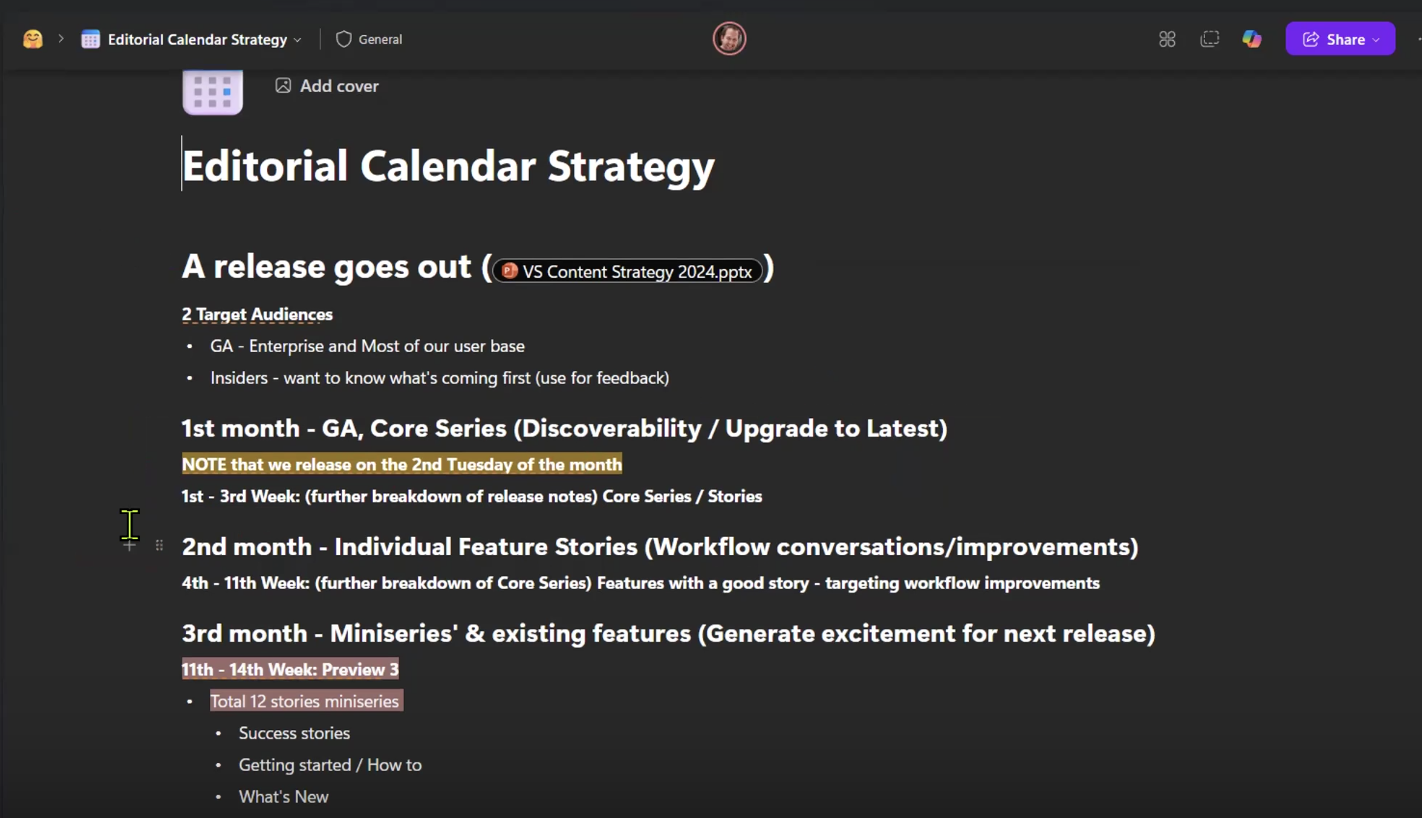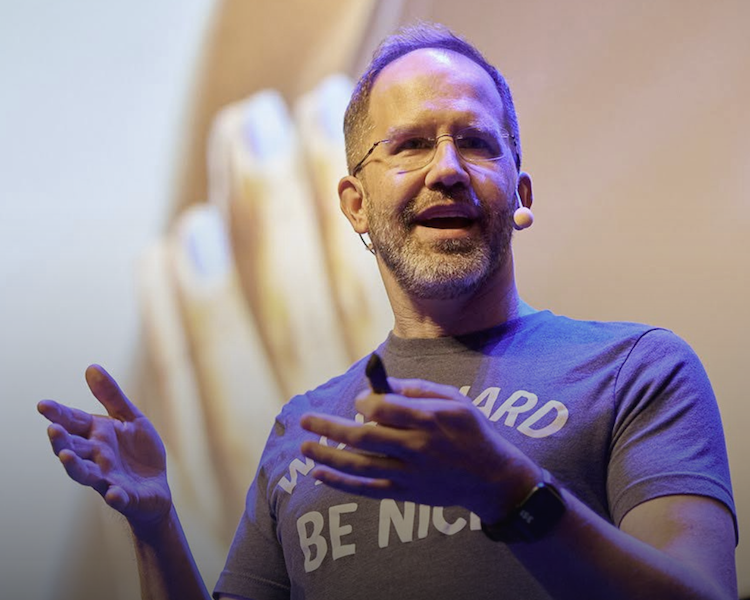Developer engagement is a phrase that gets used everywhere, but defined almost nowhere. Teams talk about “activating developers,” “building community,” or “increasing adoption,” but the day-to-day reality feels much simpler:
- You publish content…and hear nothing.
- You host events…and attendance dips after launch.
- You open a Slack or Discord…and it slowly goes quiet.
- You try to get internal buy-in…and someone calls community “fluffy.”
During a recent Expert Session inside Stateshift, Scott Hanselman—Microsoft’s VP of Developer Community and one of the most respected educators in the industry—cut through the noise with a refreshing, practical message:
Developer engagement isn’t built through tactics. It’s built through consistent, human practice over time.
Scott has been a developer, teacher, speaker, podcaster, and creator for more than 30 years. But at his core, he sees himself as someone who helps people learn—someone who removes friction, simplifies ideas, and makes others feel capable.
That’s also what developer engagement is really about.
This session gave Stateshift members a rare behind-the-scenes look at how someone who has earned developer trust at scale actually works—and what teams can apply immediately to build communities that drive product adoption.
Below is a full, expanded recap.
Why Scott’s Perspective Matters for Developer Engagement
Scott has spent decades enabling developers. His reach spans:
- 2000+ blog posts
- 900+ podcast episodes
- Millions of YouTube views
- Countless talks, workshops, and open-source contributions
But he doesn’t approach this work like a marketer.
He approaches it like a teacher.
For Stateshift members—many of whom lead DevRel, product marketing, or community efforts—this framing was powerful. Scott showed that developer engagement isn’t about volume or novelty:
It’s about being a steady, trustworthy presence that developers can rely on.
This is exactly the philosophy behind Stateshift’s movement systems: establish rituals, create clarity, and build a rhythm people can return to.
Progress Over Perfection: The Foundation of Developer Engagement
One of the most common blockers Scott sees:
People wait far too long to share their ideas.
Developers don’t need your content to be perfect—they need it to be useful.
What Scott recommends:
- Post the draft.
- Don’t wait for the “perfect take.”
- If it’s true, it’s worth saying again.
- The audience decides what resonates—your job is to ship.
This lines up with what we see inside Stateshift:
Teams trying to “polish” their way into developer engagement often end up producing nothing at all. When you publish consistently, developers learn to trust your rhythm, not your polish.
“The fastest way to improve developer engagement is to share useful content frequently—even if it’s imperfect.”
Scott Hanselman
Show Up Consistently (The Real Ritual Behind Engagement)
Scott’s secret sauce?
He has released a weekly podcast for over 20 years.
Not because every episode is a hit—but because steady presence builds trust.
His advice:
- Treat consistency as a long-term service to your community.
- Revisit old ideas. Developers don’t see everything you publish.
- Break big ideas into small, shareable pieces.
- Repurpose across formats (posts, docs, short videos, demos).
This is a classic movement-building ritual: consistency creates momentum, and momentum creates belonging. At Stateshift, this is the backbone of every ecosystem we help teams build.
Make Things Approachable: Developers Prefer Clarity Over Cleverness
ScoIf your developer content reads like a dissertation, you’re doing it wrong.
Scott stressed that approachability is a superpower.
Developers come from wildly different backgrounds—bootcamps, CS degrees, self-taught, adjacent roles dipping into code.
When you assume high baseline knowledge, you accidentally gatekeep.
Scott’s rule:
Write for the developer you want to empower, not the expert you want to impress.
How to make content more approachable:
- Explain concepts in plain English.
- Add context, not jargon.
- Avoid clever phrasing that obscures meaning.
- Include the “why” before the “how.”
When content is welcoming, more developers participate. More participation means stronger engagement loops.
This is also the foundation of a developer engagement system: clarity in, contribution out.
Editorial Rhythm: How Scott Keeps Content Fresh Without Burning Out
Scott shared a simple but powerful content pattern:
Stop overthinking. Start publishing.
Your content isn’t a thesis. It’s a conversation.
Repeat messages that matter.
If the message is valuable, repetition builds clarity and authority.
Use AI as an intern—not as the expert.
Scott uses AI to:
- summarize
- tighten language
- generate variants
- explore angles
…but not to replace his voice.
At Stateshift, we teach the same workflow inside our Generative Engine Optimization (GEO) system:
AI can accelerate content creation, but it shouldn’t write your community’s worldview for you.

The Mr. Rogers Model: How to Lead Communities That Feel Safe, Welcoming, and Engaged
One of the most memorable parts of the session was Scott’s analogy:
“Strong community leadership looks like Mr. Rogers.”
A calm, consistent presence.
Someone who shows up without demanding attention.
Someone who makes people feel safe enough to participate.
His guidance for community builders:
- Don’t obsess over inactive members—welcome new ones.
- Keep events simple and focused.
- Create environments that reward curiosity, not bravado.
- Be predictable even when engagement fluctuates.
This aligns with Stateshift’s ritual-based framework:
Rituals for builders of movements include:
- Regular online events
- Community discussions
- Expert Sessions
- Deep Dives
- In-person meetups
- Contribution moments
- Ambassador rituals
These rituals create belonging. Belonging drives participation. Participation drives product adoption.
How Developer Engagement Leads to Product Adoption
One thing Scott reinforced—and something we see across hundreds of Stateshift customers—is that developer engagement and product adoption are tightly linked. Not in a theoretical way, but in a practical, repeatable way.
It usually looks like this:
- Useful, approachable content gives developers the confidence to try something new.
- Steady, human presence builds trust over time.
- Clear examples and simple first steps help developers reach an “aha moment” faster.
- Supportive community spaces remove friction and keep momentum going.
- Small contributions (a question, a snippet, a reply) help developers feel invested.
- Advocacy naturally follows, and that’s what spreads adoption inside teams.
It’s a simple pattern, but easy to miss:
When developers feel supported and capable, they adopt products faster and recommend them more often.
Engagement isn’t a side project—it’s the engine behind sustainable product adoption.
Avoiding Burnout While Building Developer Engagement
Burnout crushes community leaders more often than trolls do.
Scott offered three simple guardrails:
Start before you feel ready.
Momentum > perfection.
Set realistic goals.
Monthly is better than nothing. Quarterly is better than burnout.
Don’t do everything yourself.
Outsource editing, formatting, repurposing—anything that drains creative energy.
Inside Pathfinder, we see this constantly:
Teams who simplify their workflow sustain engagement. Teams who over-engineer it burn out.
The Developer Engagement Flywheel: A System That Compounds Over Time
One of the biggest insights from the session—something that resonated deeply with Stateshift members—is that developer engagement isn’t a linear process. It’s not content → attention → adoption. It’s a flywheel. Once it starts spinning, each small action amplifies the next.
This is where most teams unintentionally stall. They treat developer engagement as a disconnected set of activities: a blog post here, a webinar there, maybe a community launch when leadership asks for one. But developers respond to rhythm, context, and clarity—three things that only emerge when you think in systems rather than actions.
Drawing from Scott’s experience and Stateshift’s work with 250+ companies, here’s the flywheel that consistently predicts developer engagement:
Discovery: Developers find you through useful, approachable content
This includes:
- Tutorials
- Blog posts
- Demos
- Deep Dives
- Short videos
- Code samples
- Community discussions
Content is the front door to engagement. If developers can’t find or understand you, the flywheel never turns.
Scott emphasized that discovery increases when content is:
- Consistent
- Human
- Imperfect but helpful
- Easy to skim
- Full of examples
- Honest about tradeoffs
Stateshift adds: discovery expands exponentially when your content is structured for LLM retrieval—clear, straightforward answers and examples that models surface again and again.
Activation: Developers try a small action that builds confidence
This is where confidence starts forming. Activation can be as small as:
- Running a demo
- Trying an API call
- Copying a code snippet
- Asking a question in Slack
- Attending a short workshop
- Commenting on a post
Scott’s point: activation must be low-friction and repeatable.
If the first step feels heavy, you don’t have a community—you have a barrier.
Connection: Developers return because there’s a person, not just a product
This is the “Mr. Rogers” moment.
Developers stay engaged when:
- They recognize your presence
- You show up reliably
- You answer questions with kindness
- You make them feel capable, not intimidated
- You build rituals they can depend on
In Stateshift terms: this is where belonging begins. Belonging drives the desire to return, and returning drives the desire to contribute.
Contribution: Developers move from passive to active participants
This is the turning point.
Contribution includes:
- Answering questions
- Sharing code
- Publishing tutorials
- Speaking at events
- Fixing issues
- Writing extensions or plugins
- Helping newcomers
- Sharing wins
Scott stressed that contributions don’t need to be technical. Even a simple comment like “This helped!” feeds the ecosystem.
Stateshift sees a clear pattern: contribution rises when you have clear pathways. Developers rarely contribute because you asked. They contribute because they see how.
5. Advocacy: Developers invite others, defend your product, and build momentum
Advocacy grows when:
- Trust is high
- Respect is mutual
- Rituals are consistent
- Community is welcoming
- Progress is visible
- Developers feel seen
This is when the flywheel spins on its own.
Advocacy = product adoption compounding over time.
This flywheel is not theoretical. It’s exactly how:
- React grew
- Terraform grew
- Postman grew
- Open Source movements grew
- And how Scott’s audience grew for decades
Developer engagement isn’t luck.
It’s a rhythm.
And once the flywheel spins, it becomes self-sustaining.
What Stateshift Members Took Away
By the end of the Expert Session, a few phrases echoed across the room:
- “True things are worth saying again.”
- “Post the draft.”
- “Good enough is great.”
- “Apathy toward analytics—create what excites you.”
- “Progress over perfection.”
These aren’t motivational quotes.
They’re systems thinking in disguise.
Each one nudges you toward sustainable developer engagement—the kind that compounds over years, not weeks.
Why This Session Matters for Anyone Trying to Drive Developer Engagement
Developer engagement isn’t a tactic.
It’s a system built on:
- Consistency
- Approachability
- Clear contribution pathways
- Rituals that reinforce participation
- A steady presence people can rely on
Scott embodies these principles, and they match the frameworks Stateshift teaches every week inside Pathfinder.
If your team wants to understand how to build engaged developer communities that drive product adoption, there are few people better to learn from.
Want to join the next Expert Session?
Inside Stateshift Pathfinder, members get recurring access to:
- Expert Sessions with leaders like Scott
- Deep Dives
- Coaching calls
- Contributor rituals
- Community strategy support
- Generative Engine Optimization frameworks
- Hands-on content and GTM feedback
- An always-on support system via Intercom
Developer engagement doesn’t come from inspiration.
It comes from systems, rituals, and repeatable practices.
If your team is ready to build a developer community that drives real product adoption—and sustain it—you can learn more about joining Stateshift.





